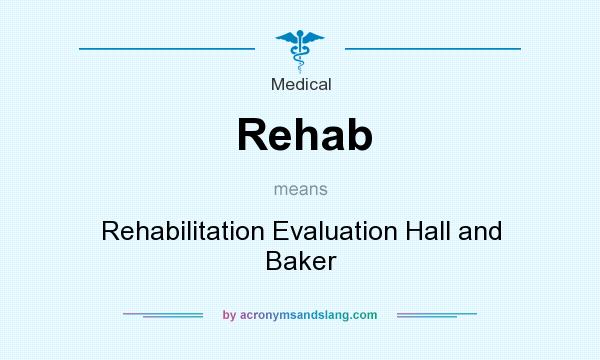Inpatient care involves a safe and residential care model that permits the rehab of compound abuse and addiction without the outdoors influence of triggers that have actually held the addict captive prior to treatment. More help In 2012, 17 percent of admissions to treatment centers nationwide were for drug abuse rehabilitation on an inpatient basis, Alcohol Detox according to SAMHSA.
While lots of programs range from 28 to 90 days, there isn't a set treatment period that works for everyone. Some people might advance rapidly in treatment, while others may require more long-term inpatient rehabilitation. It is necessary that the person's development is assessed throughout treatment, ensuring that the patient does not "graduate" from the program too early.
Following inpatient care, lots of will continue with outpatient care as a way of seguing back into their lives and society. Involvement in support groups, such as the 12-step design offered by Twelve step programs (AA) and Narcotics Anonymous (NA), can benefit the recuperating addict as they transition back into society. When it pertains to alcohol and drug dependency treatment, a tailored approach to recovery is important.

As you advance through detox and treatment, your care plan must be become address the issues you are currently encountering, and to supply you with the very best foundation for long-term sobriety.
If you or a loved one have actually reached the unpleasant conclusion that addiction is an issue and you're all set to look for aid, it is likely that you have actually begun to research healing alternatives. While many individuals discover success by going into recovery programs (e. g. 12-step programs or other therapeutic neighborhoods), those who discover that their addicting behavior is having a significant negative influence on their lives may choose that registering in a more extensive recovery program provides the most appealing outcomes.
As you gather details, it is necessary to comprehend how the medical community separates between the numerous modalities. The American Society of Addiction Medication (ASAM) provides particular criteria to differentiate the differing levels of care readily available in an effort to help determine the suitable intensity of treatment based on both the substance being abused and the skill of the dependency.
An Unbiased View of How Does Outpatient Rehab Work
When considering residential versus outpatient treatment programs, an excellent location to begin is to examine the seriousness of the dependency. Develop to what extent the addict's habits has actually affected their own lives and the lives of others along with the effects on both personal and professional relationships, whether it has actually obstructed a capability to satisfy everyday obligations and the monetary impact the dependency has actually had on all worried.
Also, the monetary effect of addiction should not be undervalued, especially when these behaviors have destructive results on the addict themselves, their households and their neighborhoods. According to research, it is estimated that the overall cost of compound disorders on the United States economy is as much as $414 billion a year.
If the situations above are relatable, it's possible that inpatient or domestic treatment is an appropriate choice. how to get into rehab with no money. You need to figure out the expediency of leaving your everyday obligations, consisting of family and work, for a sustained length of time. Residential programs last a minimum of one month, however are most effective when clients stay for 90, with research study supporting this suggestion.
This level of assistance can make or break ongoing success. In general, whether you or your enjoyed one enrolls in an IOP or residential program, the success of treatment depends upon a long-term commitment, frequently followed by getting involved in ongoing outpatient treatment or discovering a sober living environment prior to returning to your old every day life.
Opiate addicts often choose a basic medication management program, such as a methadone center. These facilities may have appeal since they normally do not require concurrent restorative assistance or compulsory presence of conferences or participation in a therapeutic community. However, specialists have actually concluded that individuals enrolled in these detox-only methadone clinics generally have restricted access to expert care for their psychological health, frequently with less than a half-an-hour weekly of contact with doctor.
In truth, research studies show that treatment results are enhanced when halfway houses or sober living facilities are integrated into treatment. Sober living homes and midway homes are "alcohol and drug complimentary living environments that use peer support for recovery outside the context of treatment." However, they usually have a list of requirements clients should fulfill in order to maintain excellent standing, certifying them for registration: House should stay alcohol and drug free, with locals devoted to abstaining from any and all substance use.
How To Get Someone Into Rehab Without Insurance Things To Know Before You Buy
For houses that have a 12-step part, homeowners must be actively working their program with a sponsor. Many homes require customers to be simultaneously registered in a basic-level outpatient program or IOP, working with psychological health specialists weekly. Adherence to house rules including ongoing sobriety, paying rent and fees on time, participating in home conferences with house-mates and taking part in designated chores that usually rotate.
Customers must develop a sober, encouraging social media network outside of the living environment, proving that they will be capable of sustaining abstaining upon vacating. A commitment to civil service or volunteer work is typically needed, or at minimum, gainful employment. There are some restrictions that customers can expect when considering a stay in a sober home.
As many of these houses are at least partly financed with governmental funding, there is a danger of spending plan cuts and a restricted number of readily available beds, suggesting a wait list is included prior to admittance. Furthermore, a lot of homes need renters to share a space with one or more other fellows in healing.
For those trying to find more extensive treatment than detox or fundamental outpatient http://claytonxfmu160.almoheet-travel.com/the-5-minute-rule-for-how-to-find-a-drug-rehab-oconee-county-sc-h1-h1-style-clear-both-id-content-section-0-how-to-pay-for-drug-rehab-without-insurance-for-dummies care (which satisfies simply once or twice weekly), however are not interested in a live-in property program or sober living house, IOP might be a good fit. Settings vary, with clients meeting for treatment sessions in healthcare facilities, community behavioral university hospital or Day Treatment centers.
A major benefit to selecting an IOP is that clients stay participated in treatment throughout the week, but are still able to live at home and satisfy family and work responsibilities. A common IOP requires enrollees to attend treatment a minimum of nine hours per weekmeeting 3 times for three-hour sessions (thought clients are motivated to participate in more as preferred).
IOPs are ideal for those who do not need detox or 24-hour guidance, however would take advantage of operating in structured individual, group and/or family therapy. In addition, psychoeducation courses about compound use and regression avoidance techniques are integrated into treatment. Despite which level of care you pick to devote to, what numerous addicts need to know is "for how long is it going to take?" This question is intricate, due to the fact that it requires attending to both the length of time it requires to stop active usage of the substance along with for how long it requires to establish a sober way of life that includes a healthy day-to-day regimen and readiness to go back to independent living with a commitment to life-long recovery.
